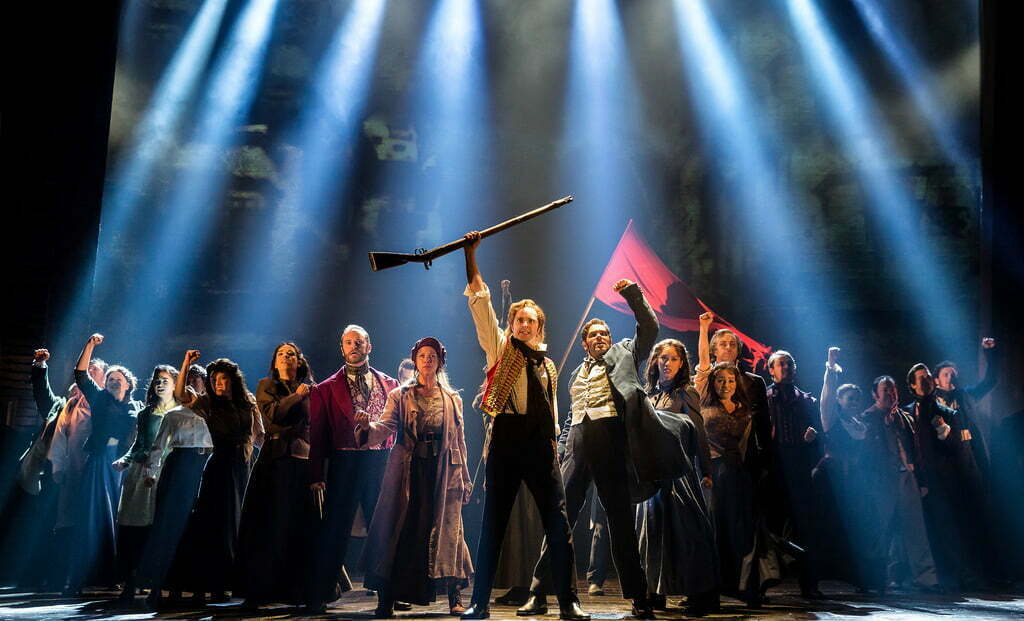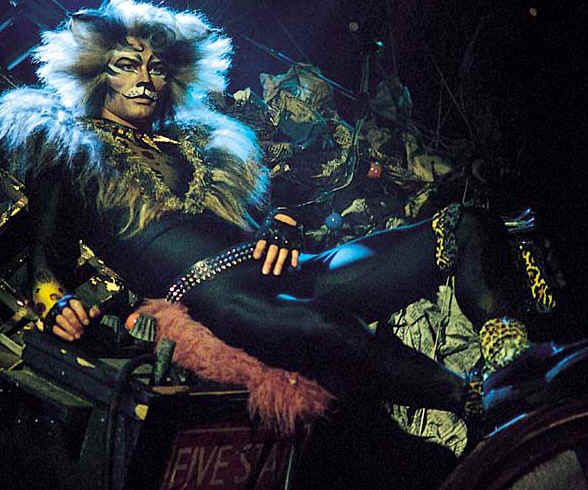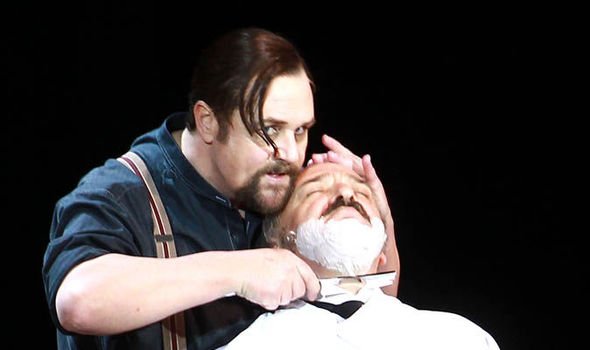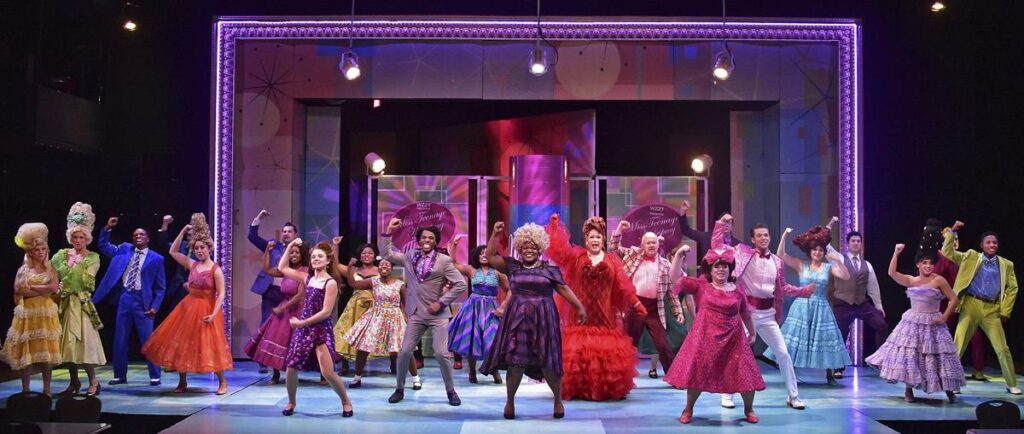Overture & Curtains
Musicals are back and I am hyped. I don’t just mean that Broadway is re-opening, though that is true. I’m talking melodrama, over-the-top sets, full-volume belting mere inches from your partner’s face – all back in vogue. And they’re doing nerdy stuff! There’s even an upcoming D&D musical! I’ll take two box seats for the glorious fusion of nerdy nonsense and musical theater, please. Just not in Box 5, of course.
But this isn’t a musical theater blog, despite my desperate pleas to management. This is a tabletop role-playing game blog and one quick mention of D&D in that last paragraph is insufficient. In far too many words below, I’ll answer the question that many a choir geek, band nerd, and orch dork has asked:
How can I combine musical theater with D&D?
And we instantly have a problem. There are two answers to this question, or rather two questions that need to be asked. Almost like we could divide this problem into two parts and shove an intermission in the middle…
ACT I: How do I convert musicals into D&D?
INTERMISSION
ACT II: How do I make a D&D game into a musical?
As always, I am using D&D as my baseline example, but these principles work for any TTRPG. Now take your seats, silence your electronic devices, and enjoy the show. No flash photography, please.
ACT I
Lot 666: A Chandelier in Pieces

Our show begins with a strange observation: the plot of a musical isn’t that different from those in D&D. You have your over-the-top characters, big melodrama, fantastical locales, and big moments of emotional climax. Plots don’t always make logical sense, but they make emotional sense and flow with the feelings of the characters. The main difference between the two is that in D&D, the cast and the audience are one and the same. Players at the table are both making and experiencing the story as it unfolds. This built-in audience participation is a feature, not a bug, but we will have to shift some bits around to adapt.
By far the easiest approach is for the player characters (PCs) to wander into the plot of a musical already in progress. This allows the PCs to have their own, independent backstories and motivations. Player agency is always a must-have. Your opera house is haunted? Good thing our cleric can turn undead. Does your city have political upheaval that might turn violent? Our druid is an anarchist and our bard comes from nobility, so we can totally talk to both sides. A mean, green mother from outer space? Boss fight time. How the PCs interact with and change the story of these musicals will surprise and delight you. Hopefully. Just be careful around Hello, Dolly! I have a frankly obscene amount of examples below of story hooks to get you started. Hardly a complete list, and if you want to run a Starlight Express game, go for it.
You can also, though this is objectively more difficult, slot the PCs in as characters in the musical. The main problem is that musicals tend to separate characters so they can have solos/duets. They also have set backstories and relationships and – it’s kind of a mess. Take Les Misérables, for example. A player could be Jean Valjean, an ex-convict trying to live a virtuous life. Valjean’s adopted daughter is Cosette who’s in love with Marius but Éponine also loves Marius… I don’t like the idea of looking a player in the eye and saying “you’re in love with that PC.” Limits player choice, pigeon-holes the start of your story – hard pass. I don’t advise this method, but if you and your players are on board, go nuts.
Do You Hear the People Sing?

My big solo number in ACT I is this list of musical plots transformed into D&D-esque story hooks. Like Jekyll & Hyde, I’m going to switch between two modes – full paragraphs and one-line prompts. This isn’t me saying one musical is better than another – please stop typing your angry comment. I’m trying to show that these plots can be used for a multi-session campaign, a raucous one-shot, or even just a side quest.
Names/professions/etc. in the examples below are ripped straight from their respective musicals. Feel free to change any or all of them to suit your storytelling needs. The Greek mythology references in Hadestown, for instance, could easily be tweaked to whatever underworld/afterlife exists in your campaign.
On With the Show!
- The land is briefly thrown into sudden darkness by an unseasonal total eclipse of the sun. Soon afterward, the PCs hear about a strange and interesting plant on display downtown in Mushnik’s Flower Shop. Said plant is an enormous Venus Flytrap given the name “Audrey II” by the meek herbalist Seymour Krelborn. Suspicion mounts as local persons go missing, notably a sadistic dentist named Orin Scrivello. Mr. Mushnik urges the PCs to look into his employee, as suddenly Seymour is acting strangely. But Mushnik has no place to hide, and now it’s supper time. (Little Shop of Horrors)

- The PCs can hear the people sing of revolution. Students have barricaded the main street in the capital city, making the music of a people who will not be slaves again. Inspector Javert attempted to sneak into the barricade and nip the revolution in the bud but was captured. Javert is now at the mercy of the desperate man that he had hunted Рthe ex-convict Jean Valjean. The army has surrounded the lonely barricade, and tomorrow is the Judgement Day for these red-flag-waving revolutionaries. (Les Mis̩rables)
- The PCs are tasked with investigating a cult of Jellicle Cats (anthro-felines) and their strange, annual ritual – the Jellicle Ball. It is 2-3 hours of lycra bodysuits, uncomfortable hip-thrusting, and bad cat puns… Ahem. I mean it’s an entire evening of frenzied debauchery culminating in the “Jellicle Choice”. Jellicle Cats, like The Rum Tum Tugger and magical Mr. Mistoffelees, vie for the attention of their leader, Old Deuteronomy. The prize? Ritualistic death and the promise of rebirth. (Cats)

- In the land above, ain’t no Spring or Fall at all anymore. A man with feathers on his feet leads the PCs way down under the ground to Hadestown to investigate. As its chthonic title would suggest, Hadestown is actually the dread realm of Tartarus – the Greek underworld. Hades, lord of the dead, has declared poverty the enemy and has built walls to keep it out. His wife, Persephone, feels more and more trapped and her absence is causing the extreme weather above. Amid all of this, a sad song plays out between Orpheus and Eurydice. (Hadestown)
- Mrs. Lovett’s meat pie shop has never been busier, which is surprising with the price of meat what is. When you get it. If you get it. And the barbershop just upstairs, run by Sweeney Todd, sees constant customers. But acrid, black smoke belches from Lovett’s chimney, and some of Sweeney’s clients haven’t been seen in some time. Some beggar woman complained to Judge Terpin, who ordered Beadle Bamford to look into it. Bamford hires the PCs to do his job while he and the Judge leer at pretty women combing out their hair. Sweeney is out, but he’ll come again when he has Judge on the menu. (Sweeney Todd: The Demon Barber of Fleet Street)

- The local opera house is under new management and is throwing a celebratory masquerade ball. Messieurs André & Firmin, the new owners, hope that the painted faces on parade will distract from recent, unsettling events. The rumors of an “Opera Ghost” are pure fiction. The stagehand found hanged by the neck in the rafters? An unfortunate accident, nothing more. A chorus girl, Christine Daaé, believes the ghost to be her angel of music – guide and guardian. A young viscount named Raoul de Chagny hires the PCs to investigate and track down this murderer. But we’re past the point of no return, and the ghost has its eyes on the grand chandelier. (The Phantom of the Opera)
You Can’t Stop the Beat

There are so many, many more shows to choose from. I’ve got tons more.
- A prince finds his corner of the sky by way of stabbing and then resurrecting the king. (Pippin)
- A witch tries defying gravity as she fights a corrupt system and becomes popular through infamy. (Wicked)
- A holy disciple betrays his Messiah, but don’t you get him wrong. (Jesus Christ Superstar)
- A prisoner scheduled for execution sees prophecy in a pharaoh’s dreams, though any dream will do. (Joseph and the Amazing Technicolor Dreamcoat)
- Star-crossed lovers don’t feel pretty or witty as they’re caught in the crossfire of a gang war. (West Side Story)
- Big, tall, terrible giants in the sky terrorize a kingdom in bloody vengeance. (Into the Woods)
- An aspiring singer is accused of murder, but they both reached for the gun! (Chicago)
- Whatever the plot of Oklahoma! is… something about a surrey… the bad guy gets shot in a barn at the end… I’ve seen this show like 5 times, I should know this.
The point is that your D&D theater of the mind can accommodate any musical whimsy that you can throw at it. And I didn’t even mention Disney musicals, largely because I live in constant fear of being sued into oblivion. Put all of the genie friends, sick-of-swimmin’ mermaids, and lion monarchies that you want into your game. They all have stage adaptations, so no harm, no foul.
Let’s reprise. Never stop saying “Maria,” get your 76 trombones, your stars in their multitudes, and keep your hand at the level of your eye. Keep your game world spinning round and round while your heart’s keeping time to the speed of sound. You can’t stop the beat – get out there and make your games sing.
INTERMISSION
Get up and stretch your legs. We have concessions in the lobby and good news, everyone! They’re psychotically overpriced. When we resume, we’ll have a rousing opening number about turning your D&D game into a musical. Additionally, we’ll have radical costume changes, outrageous sets – it’ll be a hoot.
Until next time, we’ll see you beyond the sane.
